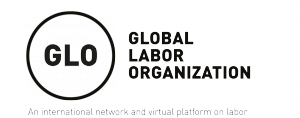Le Wang, your paper in the Journal of Population Economics (with Chunbin Wang) got the Kuznets Prize 2018. Your research suggests that there is an earnings premium of marriage delays which is larger for females than for males. This causal effect seems to work almost exclusively through more education for both men and women.
GLO: Marrying later generates higher incomes: You say it is “causal”, what does this mean in your context and why is it important?
Le Wang: We often observe that people who marry later also earn higher earnings. This positive association, however, may not necessarily imply that delaying marriages would necessarily lead to higher productivity or higher earnings. It may be simply due to the fact that people who delay their marriages may be different from those who do not. For example, people who delay marriages may be more career oriented or motivated, and thus these people are more likely to have higher earnings, whether they delay marriage or not. By “causal”, we mean that we are actually able to isolate the productivity-enhancing effects of marriage delay. This result has important policy implications because if we can somehow “cause” or induce people to delay their marriages, we could increase their earnings.
GLO: What are the policy implications, who can “cause” marriage delays and make couples richer?
Le Wang: Government can, for example, institute minimum marriage age laws (the differences in such laws across states were also the reason why we can identify the causal impacts of marriage delay). There are also other examples in which rather than regulating the minimum marriage age, governments can provide incentives for people to marry late. For example, Chinese government implemented the “late marriage leave” that allowed workers who get married at age 25 or older to take a 30-day paid leave when getting married.
GLO: Research in the gender-equality literature argues that the more females work full-time, the lower the gender wage gap. What implications do your findings have for this debate?
Le Wang: Much of the gender gap literature has been focused on whether and how human capital characteristics and discrimination can explain the gap. Our results highlight the potential role of family in explaining it. Over the past decades, there have been similar changes in the median age of first marriage between men and women. In light of our findings, such demographic trends could have much greater impacts on women’s earnings, thereby leading to the narrowing gender gap.


